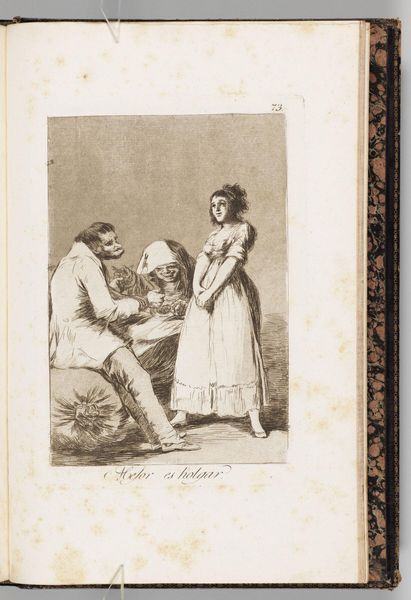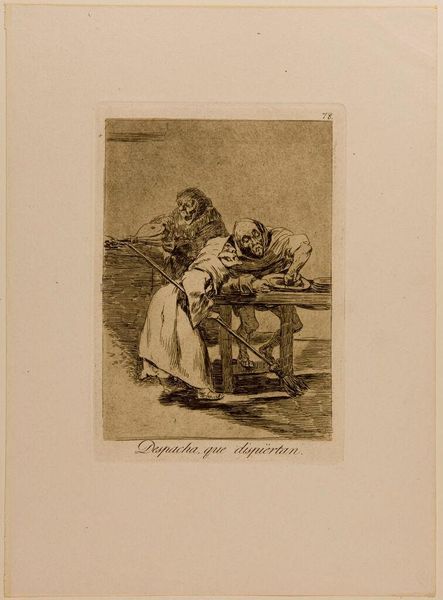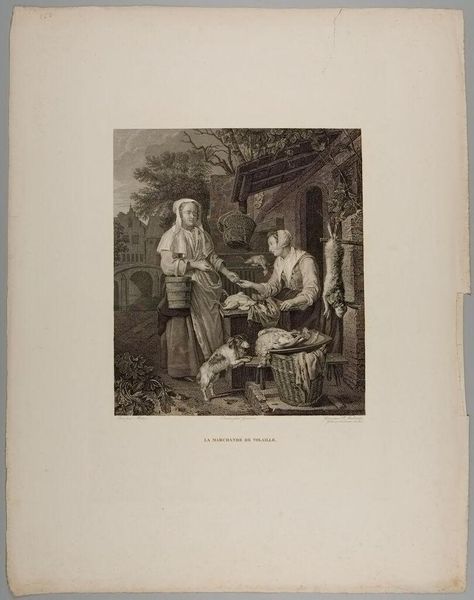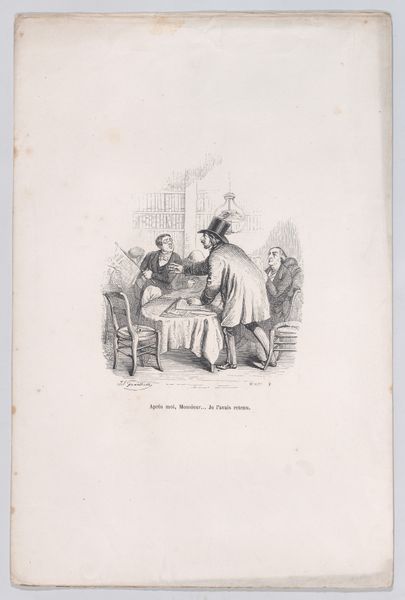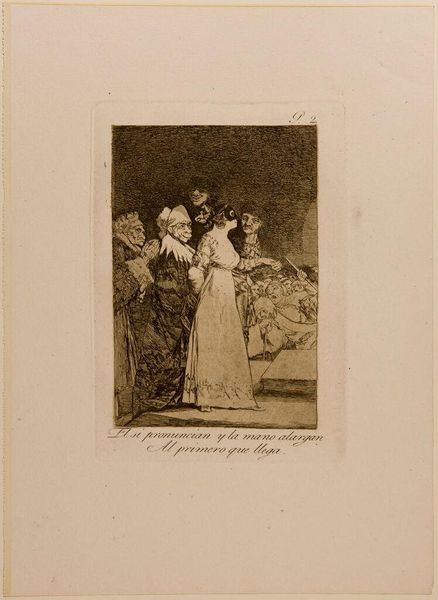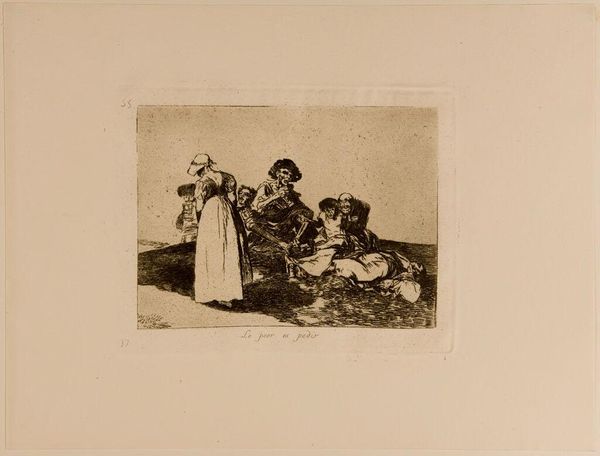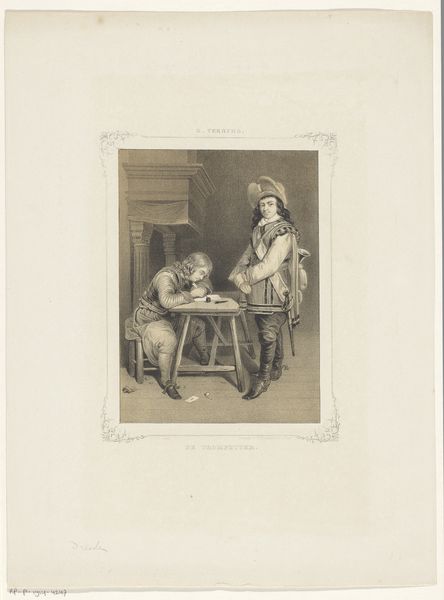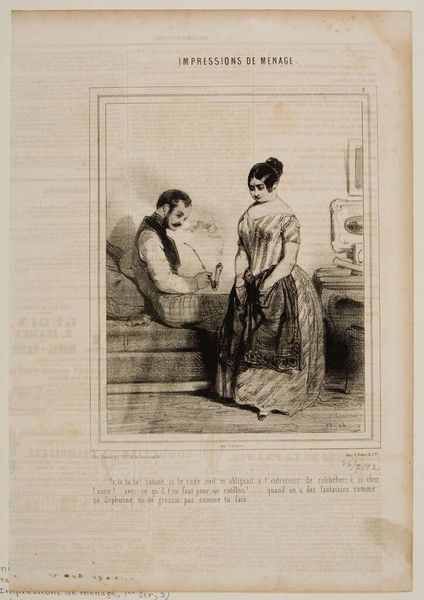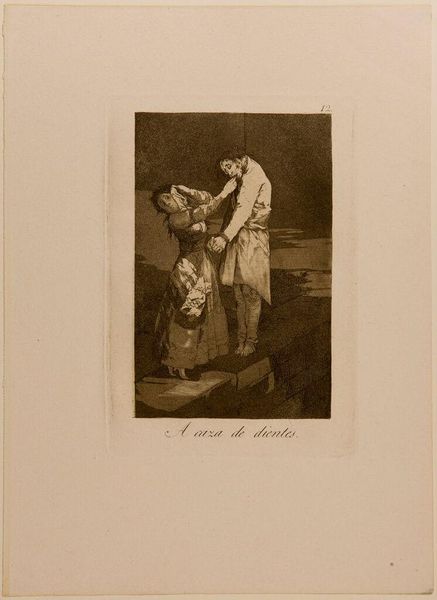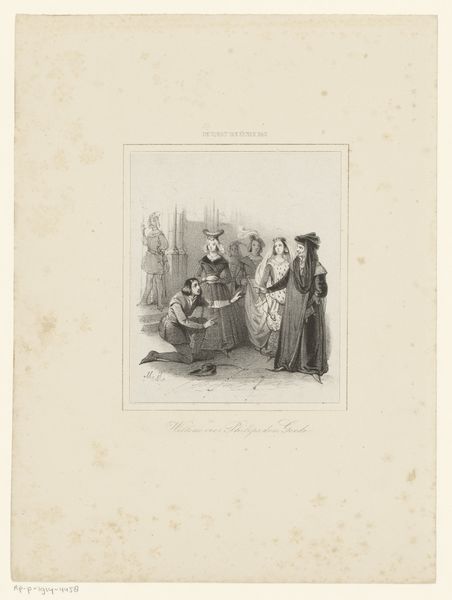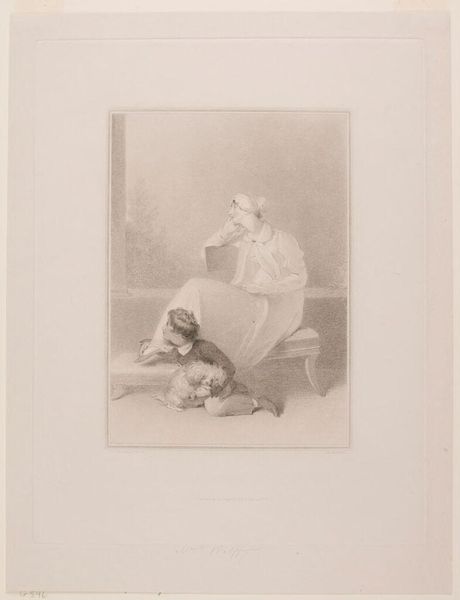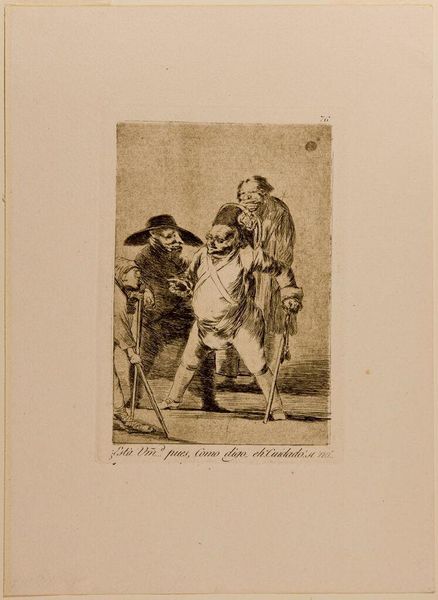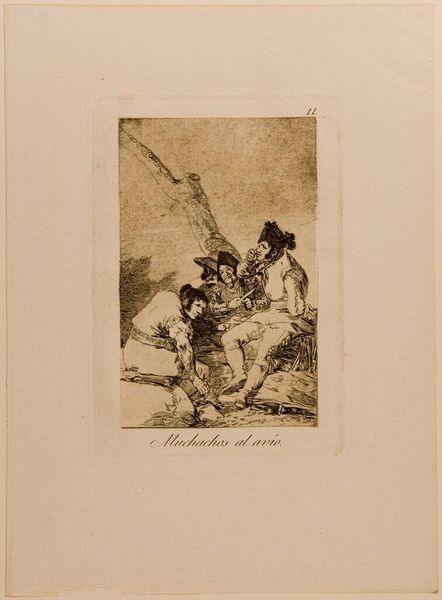
Copyright: CC0 1.0
Curator: Goya's "It Is Better to Do Nothing" really grabs you, doesn't it? The old folks are a bit grotesque, and the young woman seems so vulnerable, almost luminous by comparison. Editor: Absolutely—it's a stark tableau. What strikes me immediately is the way it lays bare the power dynamics, hinting at exploitation and the precarity of young women in a patriarchal society. Curator: I find the etching's title ironic; inaction enables these power structures, doesn't it? There's a tension between the figures that begs you to invent a narrative. Editor: Exactly. Goya's unflinching eye implicates the viewer. We are forced to confront uncomfortable truths about social inequality and the exploitation of the vulnerable. Curator: It's funny how a few etched lines can stir up so much thought. Editor: Yes, it reminds us that art, at its best, is a mirror reflecting back at us the complexities of our world.
Comments
No comments
Be the first to comment and join the conversation on the ultimate creative platform.
